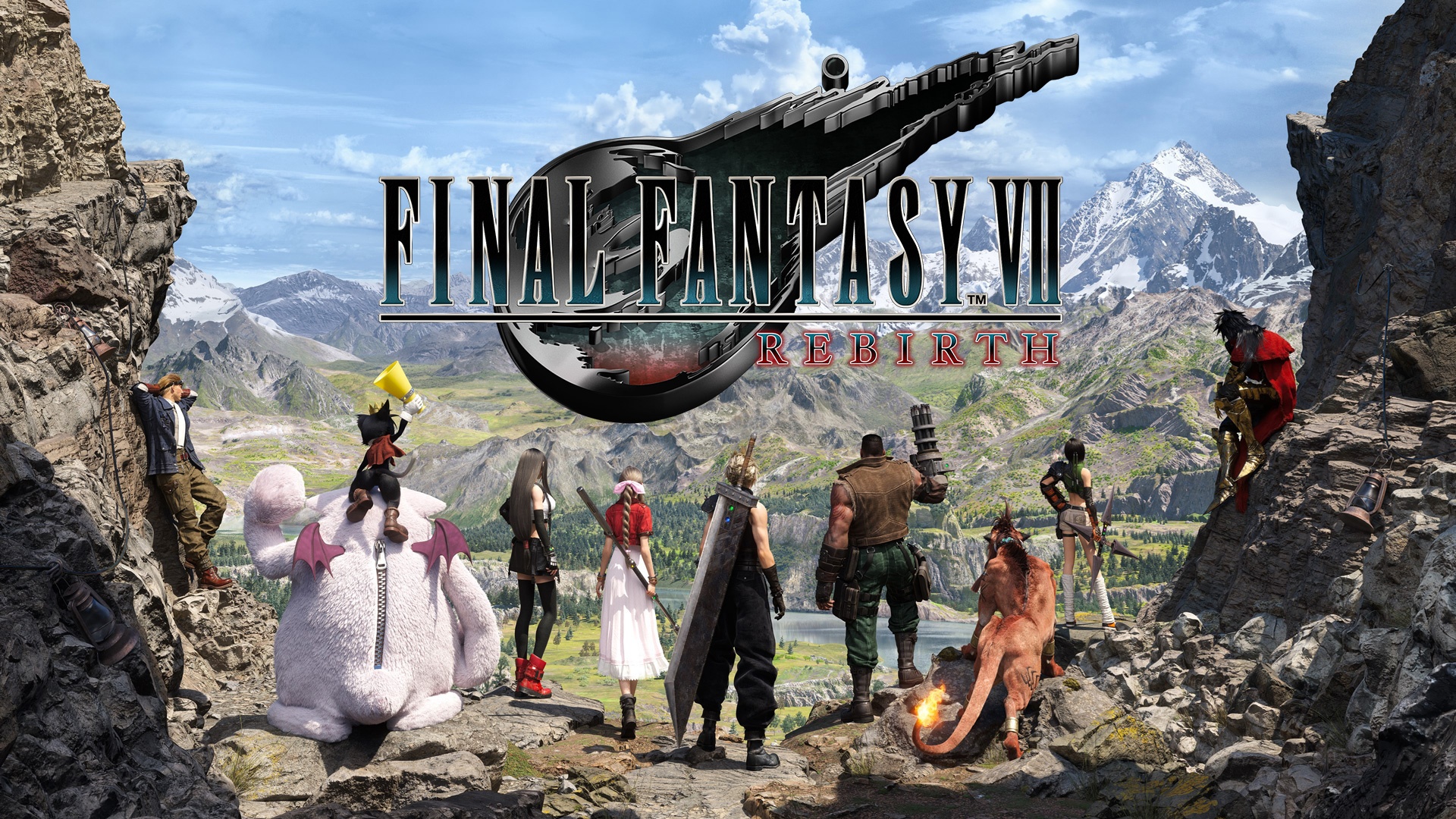Shortly after Final Fantasy VII Remake came out, Crisis Core: Final Fantasy VII Reunion was remade, but it was more like a fancy port. Since VII Remake took such dramatic liberties with the source material, it was odd that Crisis Core would fit in the same universe. Remake‘s ending seemed like the story was about to go off the rails and become its own thing.
A sequel that recreates most of the iconic events of the predecessor would be a complete waste of time. Remake was a bizarre bait-and-switch that told the same story less efficiently and introduced the Arbiters of Fate, which inevitably amounted to nothing more than a red herring.
The Midgar arc in Final Fantasy VII (1997) clocked in at around five hours, but Remake stretched it to 30. The journey from leaving Midgar to the end of disc one in the original was a significantly more expansive experience. To recreate that pacing would nearly double the playtime. What kind of new adventures will Cloud and the gang encounter during their hunt for Sephiroth? Find out in our Final Fantasy VII Rebirth review!
Final Fantasy VII Rebirth
Developer: Square Enix
Publisher: Square Enix
Platforms: PlayStation 5
Release Date: February 29, 2024
Price: $69.99 USD
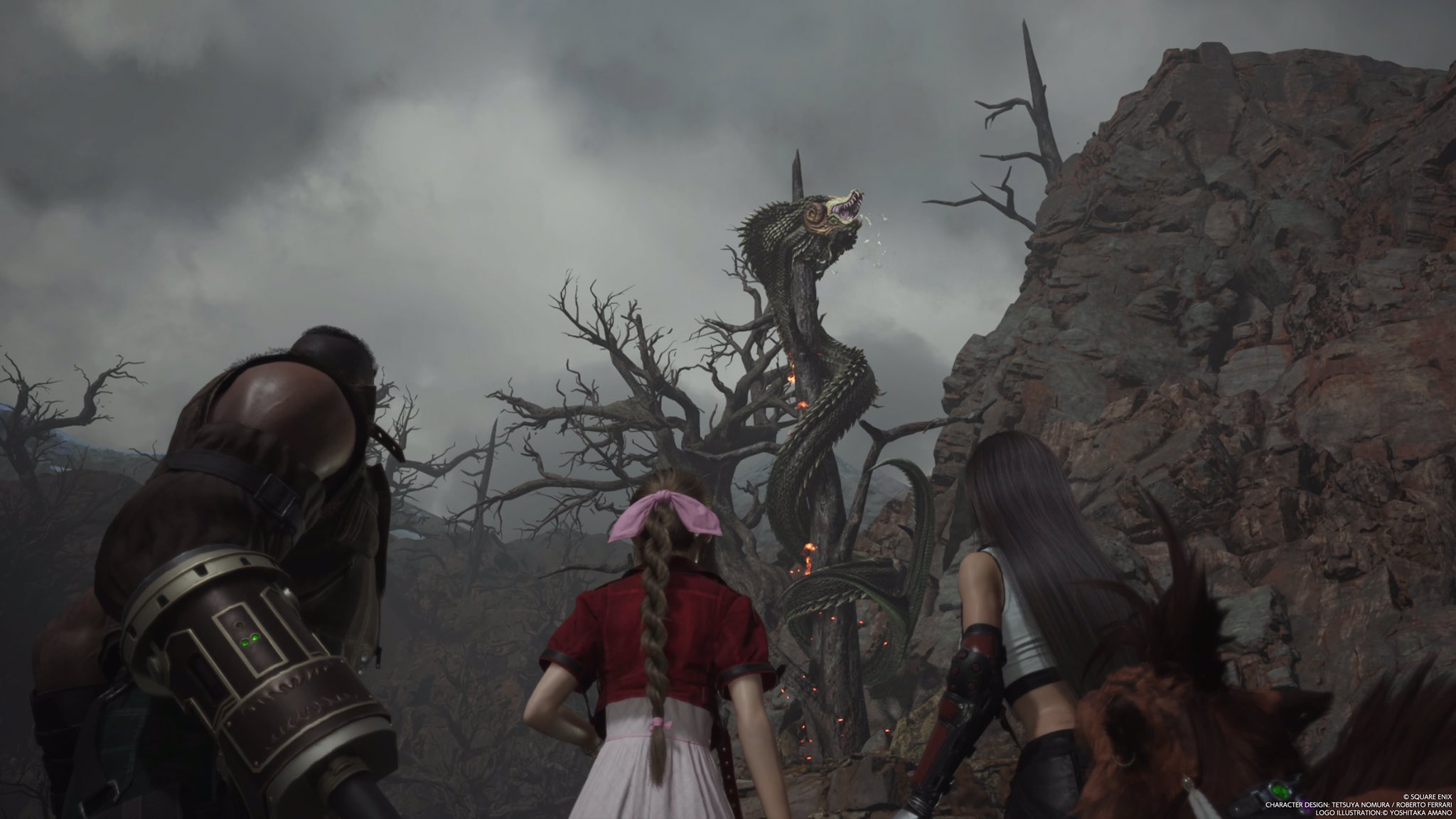
I was 12 when I played Final Fantasy VII in 1997. It was a watershed moment for video games, and for me experiencing it at that age, was a revelation. My only other RPG experiences at the time were the lighthearted adventures of Super Mario RPG on the Super Nintendo Entertainment System and Final Fantasy Mystic Quest. It had characters who smoked and used swear words, and some might have been prostitutes.
Final Fantasy VII seemed so grown up in comparison, with its gritty world and a scary main villain who ruthlessly killed off Cloud’s love interest. It was also a huge leap in technology for RPGs, but an expensive risk at the time. Sony’s PlayStation was not a proven player yet, with Nintendo and Sega still the market leaders. Square’s gamble on Sony could have been disastrous if Final Fantasy VII hadn’t been such a success.
As the original Final Fantasy VII blew my young mind as I played it, my imagination ran wild. “This is going to be the standard for all games!”, I naively thought to myself. To my 12-year-old brain, the future seemed hopeful that all video games would aspire to be as mind-altering and creative as Final Fantasy VII. The assumption was that every RPG would be a big and new interesting world with fresh ideas.
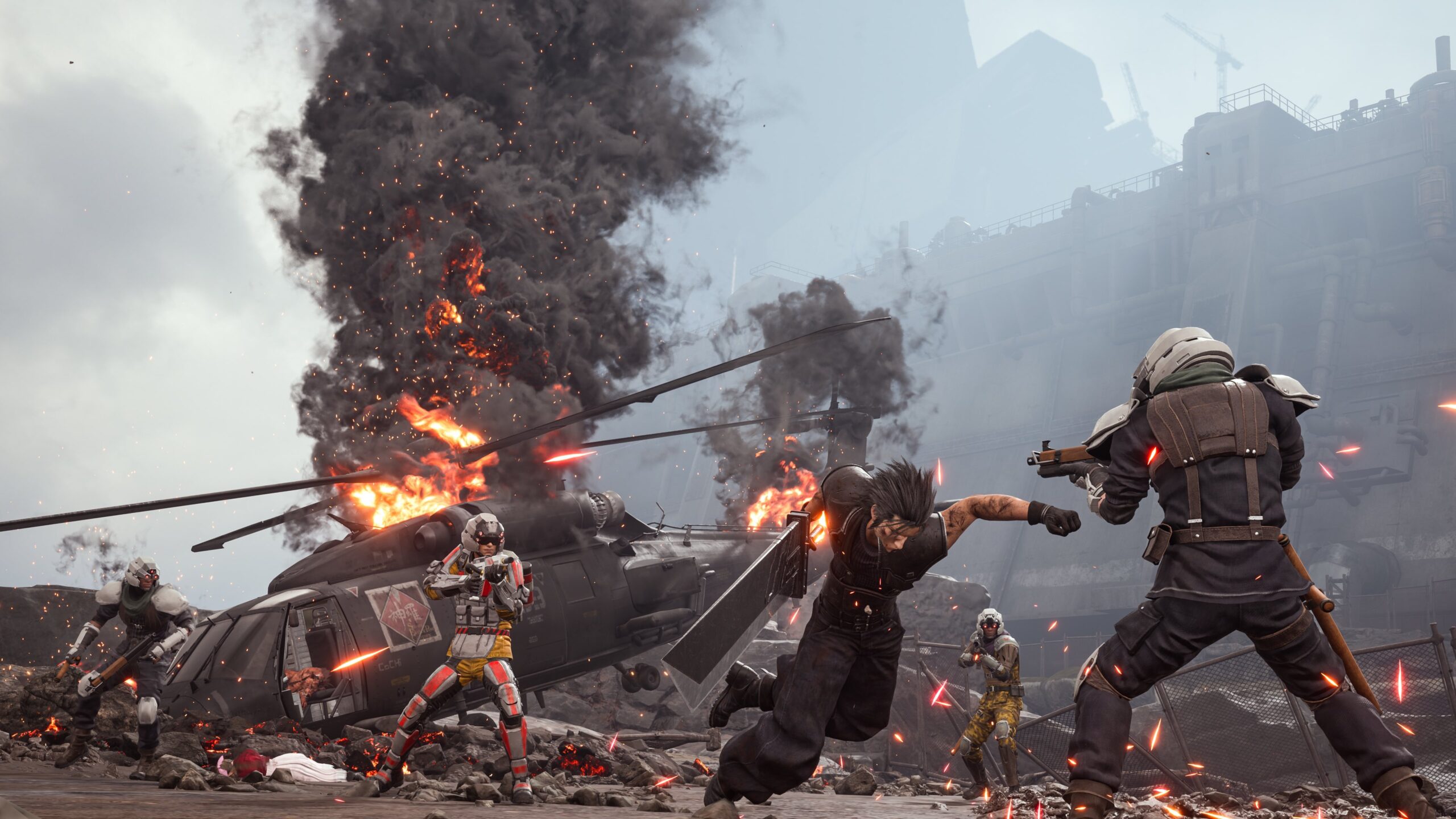
I never could have imagined that 30 years later, I would be playing remakes of the same games I grew up with. Future generations would not know the joy of breakthroughs in creativity and that all that they had left to look forward to were the scraps from my childhood and nothing to call their own. Video games peaked in the early 2000s and it was all downhill from then on.
Video game remakes were something that rarely happened during the ’90s. The unbridled imagination of developers during that decade delivered a steady flow of hits that gamers still remember to this day. Nobody ever asked for a remake either because most RPGs coming out during that time were almost always incredible. It wasn’t like today where every release is met with trepidation and uncertainty.
Remakes have become a regular occurrence for the gaming industry now. A lot of this has to do with large studios becoming creatively bankrupt and fearful of doing anything new. Sometimes there are remakes with revisionism to cater to modern audiences and maybe because they can’t be bothered to play a “stinky old JRPG with random battles from the 90s”. Final Fantasy VII Rebirth is unabashedly peak remake culture.

For the uninitiated, the real Final Fantasy VII was about an eco-terrorist group that clashed with Shinra, an evil monopolistic power company. Shinra’s science division was doing some heinous human experiments and had been trying to make super soldiers using the DNA of an alien they found in the planet’s crust. They were successful and created Sephiroth who became unstable and decided to usurp his creators.
The story takes an apocalyptic turn, featuring a large and compelling cast of characters you’ll care about. It employs striking imagery like the doomsday spell Meteor hurtling towards the planet, and a highly emotional death scene that remains effective even today.
The original Final Fantasy VII was an epic game that was very efficient with its world and storytelling. Now that the game is being remade and broken up into three parts, a lot of the effectiveness is lost when there are huge gaps in time between pivotal sequences.

After the party leaves Midgar, the story becomes less about battling Shinra and focuses more on Cloud’s internal struggle and hunting Sephiroth. Final Fantasy VII Rebirth story focuses on this sequence of events. A flashback sets the stage and establishes major plot points to be paid off later in the game and again later in the inevitable third part.
Cloud Strife is reintroduced when he is fresh out of his SOLDIER training and ready to participate in a Mako reactor inspection at Mt. Nibel. Gamers get to see Sephiroth before he becomes a genocidal maniac and witness his descent into madness.
Sephiroth always felt different his whole life. He’s a superhuman created from alien DNA and his strength is best described as demi-godlike. He could never relate to anyone and his isolation fueled his inevitable hatred when he finally discovers the truth behind his creation. He believes the planet is his birth rite by way of his mother, who was defeated by the Ancients thousands of years ago.

Rebirth establishes crucial questions early on to drive the narrative; “How did Cloud and Tifa survive the encounter with Sephiroth four years ago?”, and “How and why is Sephiroth back?”. These mysteries and more are gradually unraveled, as well as some utterly perplexing meta-narratives revolving around a Final Fantasy VII multiverse, which is as stupid as it sounds.
The main story in Rebirth revolves around Cloud and the gang following zombie-like, black-robed men who are seemingly drawn to something. These black robes can be found everywhere and they all mutter the same phrase about “reunion,” and are otherwise fairly docile until Dr. Hojo does some of his twisted body-horror experiments.
Anyone going into Rebirth without having played Remake to the end will be confused because the story directly follows up on many plot points established in the first part. While the main story broadly follows the original’s structure, many details are different or expanded upon, creating a remixed version of the classic tale.

Players will be following the black robe trail from place to place where each region has its open world biome, festooned with side activities, side missions, and a ridiculous amount of mini-games. Usually, the new area will be set in a town or two and there is a mini story arc that fleshes out the world and its characters.
For a while, it’s a fulfilling experience and the game goes out of its way to make you feel like it is earning its $69.99 price tag. The production values are through the roof and the attention to detail is consistently impressive. Junon is mindblowing and faithfully constructed in 3D with its many layers. Details like the sickly accessory salesman can be found and there are new flourishes like a movie poster for a Terminator-like film.
Gold Saucer truly feels what it would be like if someone built an amusement park in the middle of the desert with an unlimited budget. The infrastructure and layout of the park are very believable and the density of NPCs makes the place feel alive. It’s a savage slap to the sense with the abundance of costumed characters, lights and effects all going off all at once.

Getting immersed in Rebirth‘s world is easy so long as you ignore the fact that almost every door can’t be opened. In the real Final Fantasy VII, if you saw a closed door, chances were you could open it, walk through it, and enter the structure. There is no point in a door that can’t be opened. This is something that Breath of the Wild and Tears of the Kingdom got right; they were big open worlds on Switch, with buildings you could enter.
The scope of the environments is vast and feel like they are to scale. The large open landmasses seamlessly blend into areas that can be best described as dungeon-like locations. There are some missteps with the world design- like how there are very painfully obvious yellow splats of paint that have been haphazardly applied to climbable structures. This is confusing because there are already arrow indicators to interact points.
It can come off as condescending – as if the developers think very little of the intelligence of the players. Worse yet is the Ubisoftian approach to open world map clutter. Expect your area map to be peppered with obnoxious nodes and symbols. Be ready to tediously climb up towers very slowly to reveal points of interest and to do several copy-pasted objectives where you do a very easy and pointless QTE.

There is not much to do in the open-world environment. Cloud and the gang can’t do much when they aren’t in battle. Riding a chocobo or driving the Buggy/Tiny Bronco is fun at first but they don’t serve many functions apart from getting from point A to point B. You won’t be racing chocobos unless you’re in Gold Saucer and the Buggy can only be driven in the Corel area and mountain chocobos can only climb very specific surfaces.
The world isn’t a sandbox where you can do fun or cool things or make discoveries like in Tears of the Kingdom. Cloud is severely restricted in what he can do since most of his actions are contextual only. He can vault over some geometry and jump across some gaps, but the game is very specific about where it’s possible. The open world is unrewarding to explore and the limitations reveal their artifice.
The side missions and optional objectives are not terribly interesting or have compelling gameplay. What makes them worthwhile is how they use the moment to build upon the characters or the world. The real Final Fantasy VII was amazing because it had a cast of characters you cared about and was a wonderfully rich setting. The side content of Rebirth further compounds this and reinforces it.
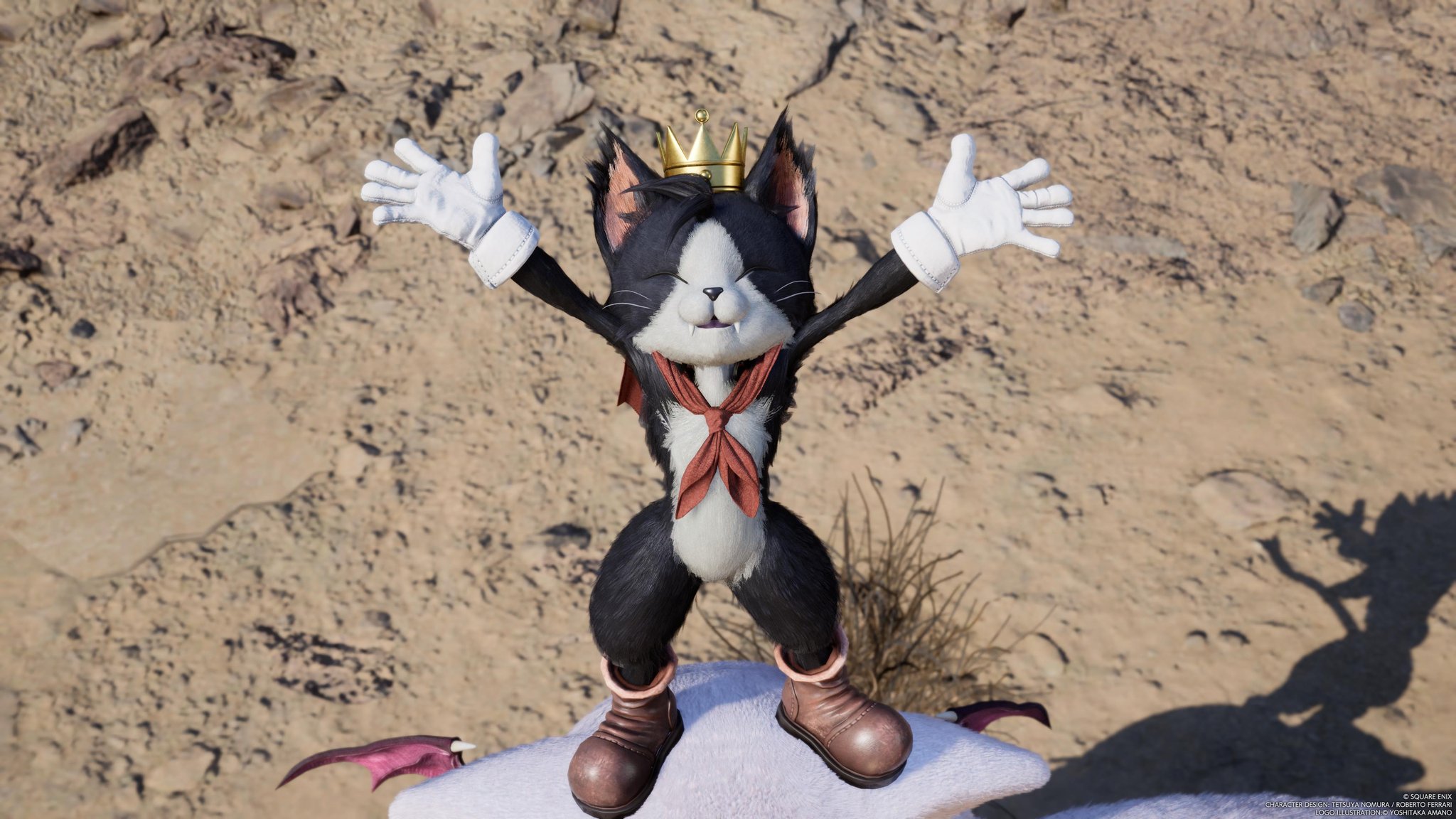
Unfortunately, Rebirth ultimately sabotages itself with its revisionist themes and its utterly stupefying deviations. When Rebirth is being faithful and closely follows the general idea of Final Fantasy VII, it is firing on all cylinders. When it thinks it knows better and tries to do things differently, it violently falls flat on its face.
Final Fantasy VII‘s story was already plenty deep and complex as it is. Rebirth tries to fix what wasn’t broken and introduces a ton of red herrings and misdirections in hopes of creating a sense of mystery and intrigue for fans who think they know the original story. Yet anyone who has paid attention to how Remake turned out, it is very easy to pick apart what is going on and where the story is going.
Sephiroth makes far too many appearances and is shown more than he should. It is bad enough that Remake used him as a final boss because there is not a lot of tension when going up against a big bad who you have already beaten. Rebirth makes many of the same mistakes that held back the first part and it still insists upon itself with the out-of-place theme of “fighting fate”, and cheap subversion of expectations.

Everything that you loved about the original game and these remakes undoes itself by introducing the premise of multiverses. This direction dates exactly from when the Final Fantasy VII remake project began, seemingly taking inspiration from JJ Abrams’ lazy “Mystery Box”, approach to storytelling.
When there is a potentially endless amount of universes that all have versions of the characters, then nothing about them is unique. A major pillar of Final Fantasy VII‘s story was that we only have one planet and that we must take care of it. This was crucial to what made the story so impactful and enduring, yet Rebirth pisses it all away for the sake of cheap and lazy fan service to please shippers.
Other times Rebirth will try to blindside players with a surprise, only to undo it and set the course to be faithful again. This is stupid because it wastes time with pointless scenes that exist to tease fans of possible changes. A perfect example is Rufus calling for a truce with Cloud, only for it to be undone by Yuffie’s botched assassination. The scene is dumb because it forces Rufus to make assumptions and act out of character.

The way how Rebirth ends suggests that the setting is one of many (possibly infinite) worlds and the entire point of it all is to imply that the remake trilogy is meant to be a sequel to the original game. This is disappointing because a sequel to Final Fantasy VII could have been anything, yet this sequel conveniently recreates many of the iconic scenes/set pieces of the original.
This isn’t a good kind of fan service. It’s noncommittal and cowardly because even though it appears to be blazing its trail with “the unknown journey”, the reality is that Rebirth is still basically the same story as the original. It’s just told worse and is cluttered with pretentious and dated meta-storytelling.
A lot of the deviations are only shocking to those who played the original Final Fantasy VII. To someone who never did, most of the new story beats revolving around the arbiters of fate, and the multiverse won’t mean anything. Just like the aforementioned example of Yuffie’s pointless assassination attempt, dramatic deviations are merely distractions and red herrings.
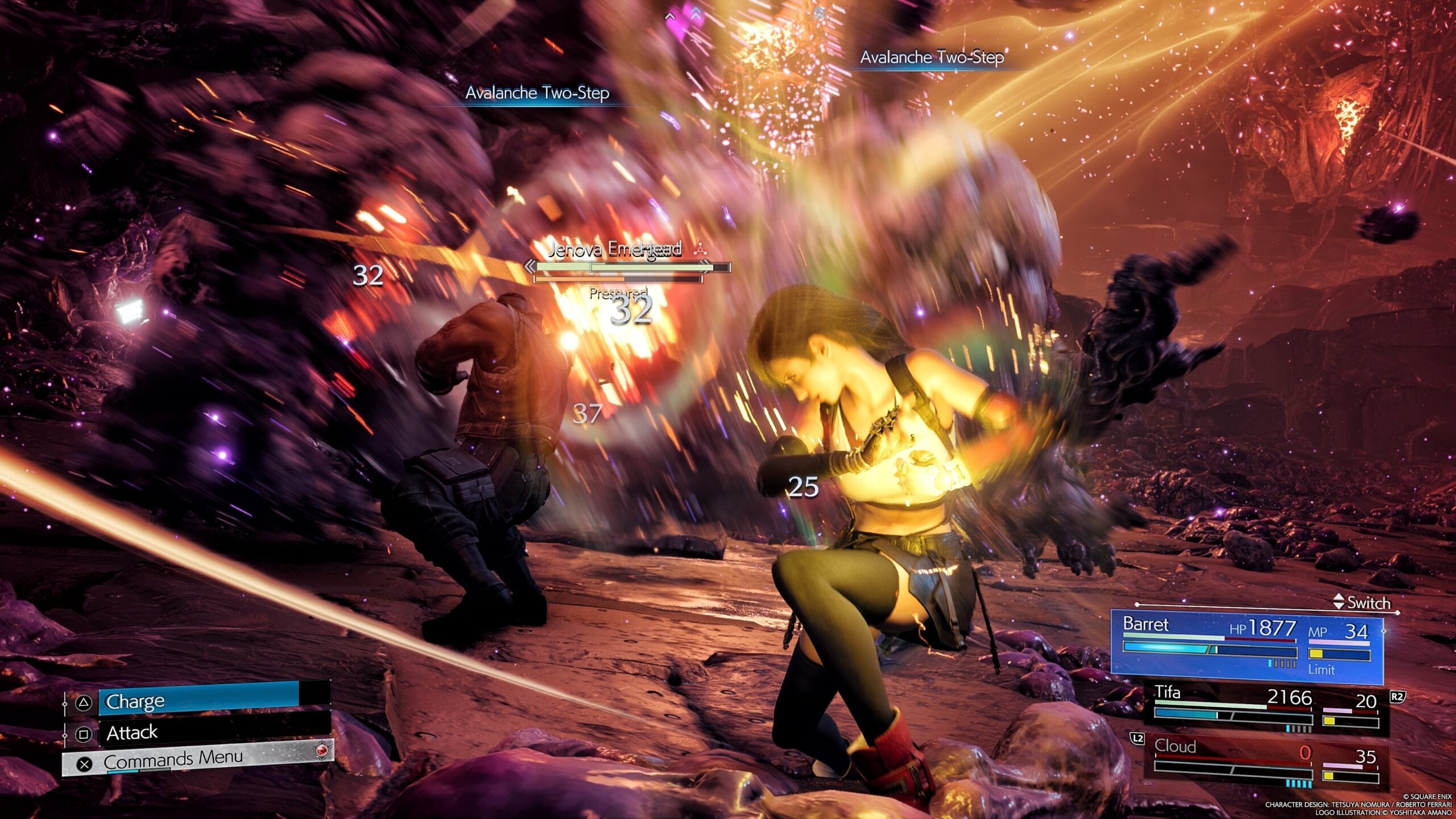
Unfortunately, Vincent and Cid are no longer party members and don’t do anything. Rebirth had to move Rocket Town to accommodate the change in story and is worse off for it and it is all because of the episodic structure of the remake project. Vincent isn’t viable anymore since he is introduced so late now that it would throw off the balance.
For all its attempts at expanding the scope of the world, it is weird when Rebirth cuts areas down or simplifies them. The Shinra mansion in Nibelheim is significantly truncated and it is no longer possible to explore it to its fullest. The Temple of the Ancients is also reduced to being almost all cutscenes and isn’t a surreal M.C. Escher-esque labyrinth anymore.
Not all changes or additions are poorly executed. In the original, Yuffie was sidelined as an optional character because the developers couldn’t flesh her out in time. In Rebirth, she is fully realized and is a main party member. She used to be merely a comedy character, but now she is a comedy character who is a nationalist with a jihad on Shinra.

A lot of Rebirth‘s climax hinges on these new thematic elements and it comes at the expense of the most iconic scenes of the original being recreated but worse. When an important character dies, you don’t even get the emotional burial scene. Death itself seemingly has little to no weight now since there are other universes with living versions of the same characters since nobody is ever really gone...
Some scenes are less powerful than they were in the original due to inferior revisionism. A perfect example is the scenes involving Barret and Dyne having their contentious reunion. In the original, Dyne is so far gone that when Barret reveals that his daughter is alive, his first thought is to kill her and himself so they can reunite with her mom in heaven.
In Rebirth, while the scene is well-directed, it is dramatically less powerful due to the complete change in how Dyne is written. This version of Dyne is less insane and is more bitter and jealous. He also has Magneto powers, which are never explained.

Rebirth is also T-rated, and it negatively affects many pivotal scenes and characters. While there is some blood, it is extremely small amounts whereas a paper cut would seem more graphic. As I correctly predicted, Cid doesn’t smoke anymore which flanderizes his character. Overall, he is seemingly rewritten to be a completely different person.
The scene where Barret and Dyne lose their hands is shot very poorly and it doesn’t look like they lose their hands. This was another scene that the original did better because it smartly cut away and framed the scene where you couldn’t see the dismemberment. There are many other examples where more blood in the scene would have made it more dramatic and impactful. This was something the original perfected.
Due to the expanded nature of the remakes, the pacing has also taken a hit as well. The original Final Fantasy VII did not waste any time and while you didn’t get world-building as robust as it is in the remakes, your imagination filled in the gaps. Everything in Remake and Rebirth is drawn out to an utter crawl to the point where you might even forget what you’re supposed to be doing in the plot.

When you visit Costa Del Sol in the original, it was a place that the gang merely passed through. You could talk to some NPCs and even buy a villa, but it was mostly optional things to see and do. In Rebirth, Costa Del Sol takes hours and features several sequences where players are required to play multiple mini-games to progress.
This in itself isn’t a problem since it is in line with how the original threw multiple mini-games at the player during the adventure. The problem is that before arriving in Costa Del Sol, the player had just endured a cruise ship where there was a card game tournament, and before that was another mini-game revolving around marching in Junon.
These aren’t isolated examples. There are some overly long moments where the game feels padded out. Bumming around in Corel Prison and being forced to play more of the Queens Blood card game with thugs to get greens for a sick Chocobo to ride in a race is blatant and tedious padding. There is already about 50 hours worth of side content – the main story did not need this.

Some of these need to be spaced out or made optional. The beach arc in Rebirth is amusing but nothing of note in it matters apart from Yuffie becoming a party member. The mini-games do help the game have some variety since there isn’t much else to do apart from fighting or walking all the time. Thankfully, there is an absurd amount of them and many of them are surprisingly deep.
The Queens Blood card game is the most thought-out and complex mini-game in Rebirth. It’s like a mix of Triple Triad from Final Fantasy VIII and Backgammon. There are a lot of cards to collect and the questline features extensive cutscenes. There is also a single-player variation of Queens Blood which becomes a puzzle game where players are given specific cards and must solve the configuration with a winning move.
There is an amusing Star Fox-like rail shooter and a Punch-Out!! clone at Gold Saucer. Fort Condor makes its return from INTERmission and has had a few tweaks to it and has its storyline where the heroes get transported inside of the game, complete with retro-style low poly models.

Costa Del Sol has a shooting gallery and a version of soccer for Red XIII. Cloud can race chocobos which can be fitted with gear that affects the stats and abilities. There is a Fall Guys-style game where the cast is transformed into frogs and you have to time your jumps. The piano mini-game proves to be one of the more challenging options since the analog sticks don’t always feel like they’re accurate when inputting quickly.
Many mini-games from Remake make a return as well, like the work-outs with Tifa and G-bike which recycles many assets from their respective game. Even the Junon parade sequence is a reworking of the dancing sequence from the Honeybee Inn.
There are many more mini-games to be found in Rebirth. It is easily one of the most faithful aspects of this game and every single one of them is a legitimate improvement of their counterparts in the original Final Fantasy VII. They’re challenging enough that winning the best rank items feels genuinely rewarding.

Combat is the main mode of interaction in Rebirth. The system is the same as it was in Intergrade with each character serving a specific role in battle. Cloud is always a reliable all-rounder and now comes with a ranged attack when attacking while dodge rolling. Aerith is a high-magic power with poor evasion but has reach. Barret is a tank with long-range firepower and poor magic stats, and Tifa is a speedy DPS.
A new addition to the party is Red XIII, who is a dog/cat hybrid who acts like a paladin with his ability to tank damage and has decent magic and attack stats, but low reach. Yuffie makes a return from INTERmission and she is functionally the same as she was; high speed with alternating long reach or close range. She proves to be one of the more technical characters who is always effective.
Finally, there is Cait Sith who can become two fighters and can use mines on the field. Cait Sith is a wild card of a combatant and can be chaotic due to some of the luck-based factors of his style. The synergy attacks are the new wrinkle in Rebirth and they vary depending on who is in the party. Since it is possible to have three different party configurations to switch on the fly, there is rarely a moment of complacency when deciding on a party.
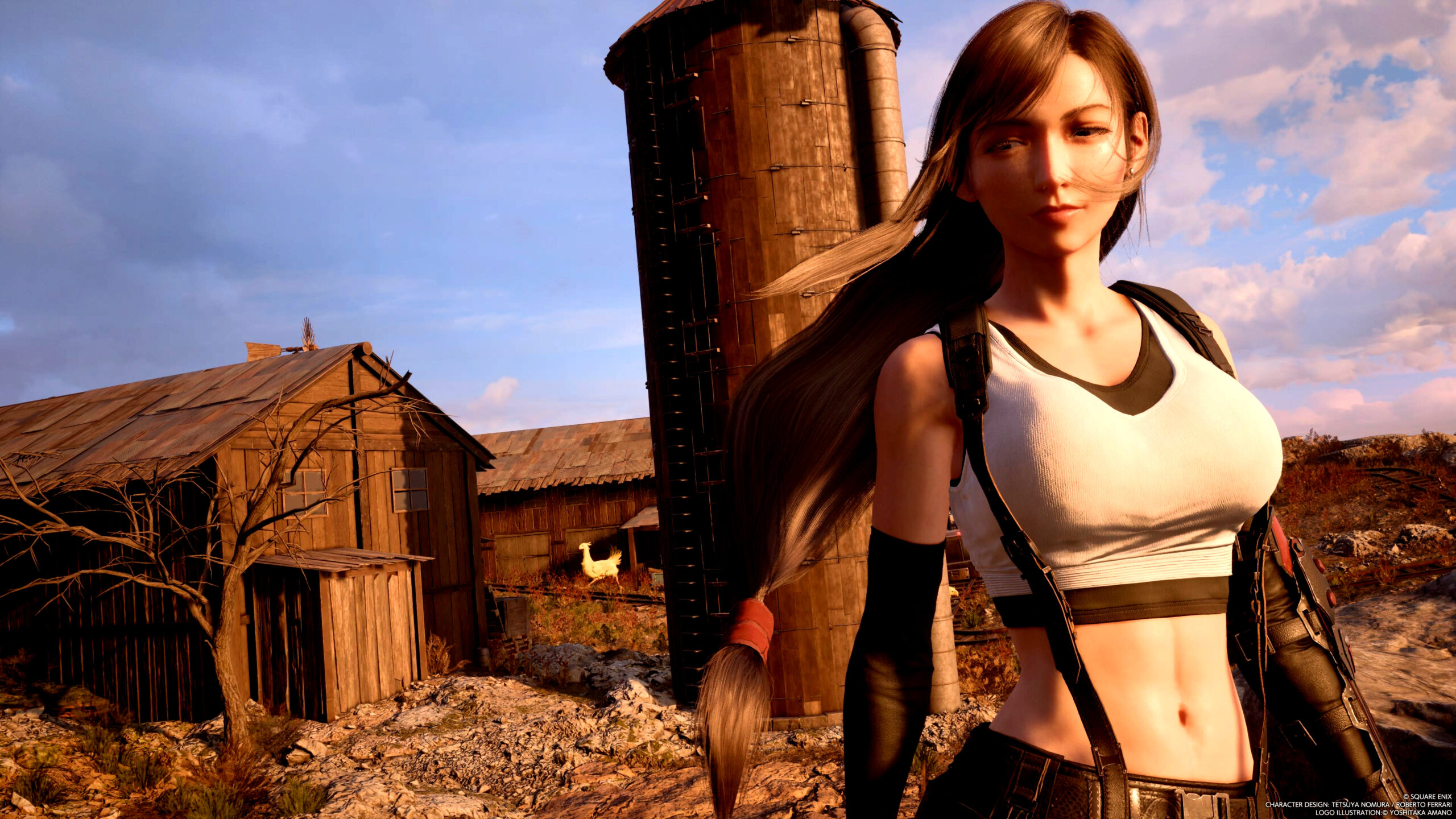
The new method of upgrading weapons disappoints and is not as fun as it was in Remake. Folios have a nightmarish and messy UI. On top of having to manage item crafting, equipping materia configurations, and managing gear, the folios are a bit much to deal with and become another tedious menu to rummage through.
The developers seemingly expected that most people would not care about the folio system and included several auto-build options to circumvent having to deal with it. The option to respec all the folio points is always there for anyone who will find the urge to allocate abilities and stats later on. It seems like an admission of failure on the designer’s part.
The upside to this system is that almost any weapon is a viable option. This is especially important for Cloud since his buster sword is probably the most recognizable weapon in all video games. Why wouldn’t you use it? Thankfully, it has balanced stats and even gets a fair amount of materia slots as the weapon levels up.

If you didn’t like the combat in Remake, you still won’t like it in Rebirth. It is the same general idea but with a few extra features and more options to utilize. For an action RPG, it manages to be a measured balance of the best aspects of both, which is very rare. You won’t win by button mashing and who you have in the party, what they’re equipped with, and the actions made in battle always matter.
It is an enjoyable combat system that can keep action game fans on their toes but still demands strategy from RPG aficionados. It was probably the hardest feature to get right and they did for the most part. The only thing in the combat that doesn’t work as well as it could is the summons which work whenever the game feels like it.
Ironically, the one feature that should’ve been the easiest to get right was the story since it was already there to work with. Despite a few hiccups and miscalculations, the narrative is great when it is being faithful. Towards the end, everything falls apart. It was already heading in a bad direction due to the Zack sequences, but the final moments are complete bat guano that ruins everything and leaves a dreadful and lingering taste.
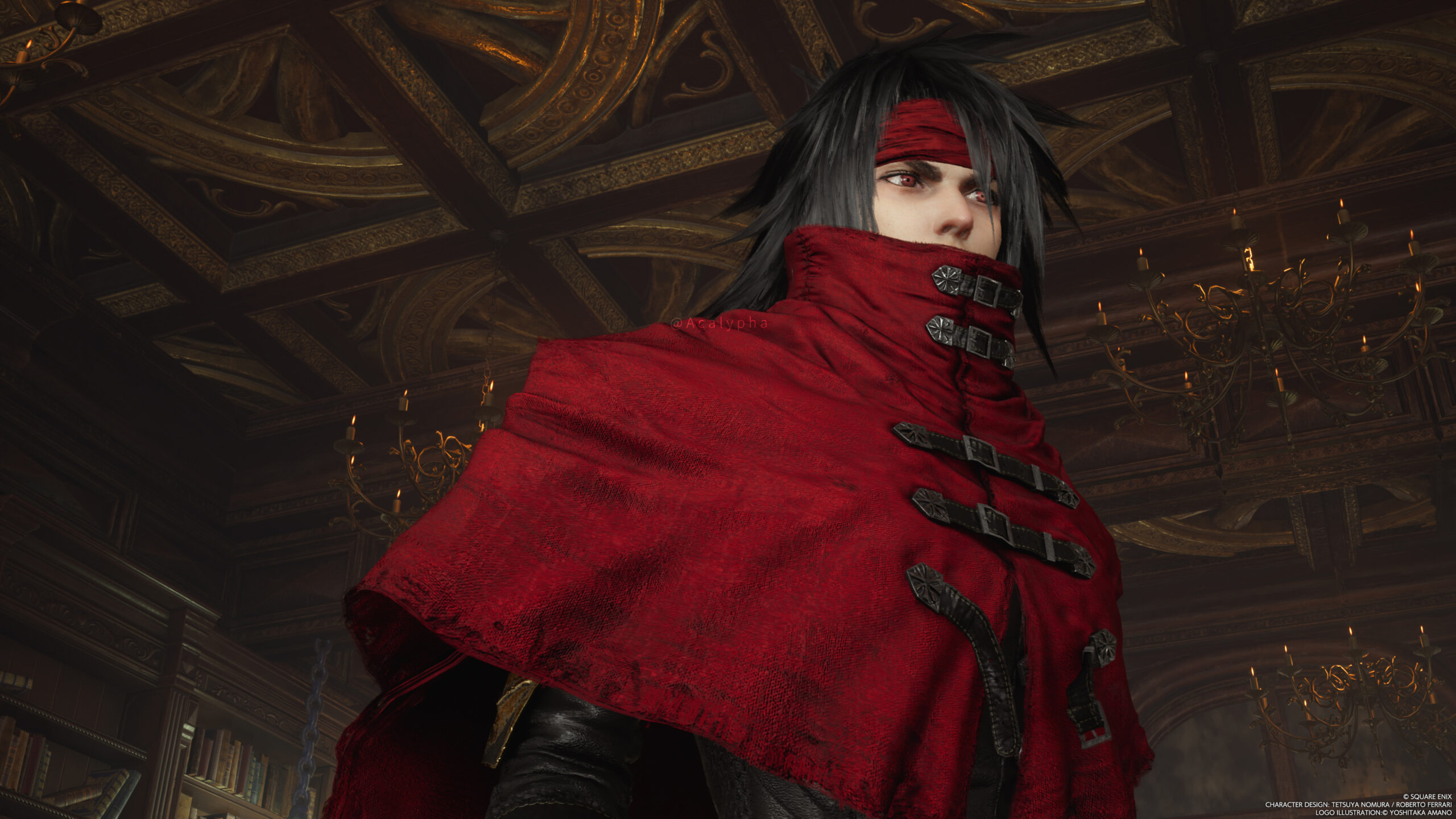
Rebirth looks pretty good for the most part, but it does falter under scrutiny. Remake was more consistently good-looking and had incredible lighting thanks to its confined setting. Rebirth is less impressive and it’s likely due to the scope of the world.
Characters clip through foliage and there are some questionable textures throughout the open world. When vaulting over ledges, Cloud’s animation lacks the appropriate weight. He seemingly snaps from point A to point B with almost no momentum and he climbs unbearably slow. It is also not too hard to come across ugly NPCs or crude models for objects.
Despite these inconsistencies, Rebirth does boast some of the most elaborate use of particle effects. There are huge crowds of NPCs in dense environments. Some stunning-looking vistas showcase the massive scale of the world which justifies why Rebirth had to be a PlayStation 5 exclusive.

One of the best things about Final Fantasy VII was its story and characters. The entire point of the remake was supposedly to reimagine it with modern technology. Unfortunately, a remake of Final Fantasy VII was a monkey’s paw wish come true. At times Final Fantasy VII Rebirth can feel like you’re being forced to remember someone else’s memory.
The gameplay in Final Fantasy VII Rebirth has enjoyable setpieces and fun minigames, but the pacing sometimes drags the experience. The story is what was supposed to tie everything together. Final Fantasy VII was always story-driven and when the developers don’t get that right, why bother? Sometimes you think you’re getting what you want in Rebirth, but then it scoffs at you and thinks it knows better and tries to fix what wasn’t broken.
The biggest departures in Final Fantasy VII Rebirth’s story feel like fan fiction. There is no restraint when it comes to Sephiroth and there’s too much emphasis on the love triangle to please the repugnant shippers. There should have been more effort to focus on the internal struggle of the characters instead of the “Will she/he, won’t she/he?” aspect of the story.
Final Fantasy VII Rebirth was reviewed on PlayStation 5 using a copy purchased by Nichegamer. You can find additional information about Niche Gamer’s review/ethics policy here. Final Fantasy VII Rebirth is now available for PlayStation 5.
